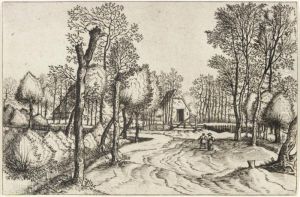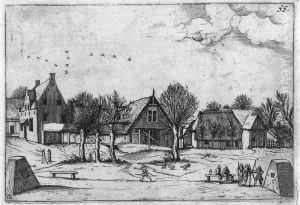Master Of The Small Landscapes Paintings
The Master of the Small Landscapes is not a single identifiable artist but rather a name given to an anonymous group of artists or perhaps one leading artist with assistants, active in the 16th century, primarily known for their influence on the landscape genre in Flemish art. The term arises from a series of landscape prints published in Antwerp in 1559-1561. These works were innovative for their time, focusing on the naturalistic depiction of the countryside of the Southern Netherlands, moving away from the traditional, more fantastical or biblical landscapes that were prevalent in earlier art.
The Small Landscapes series introduced a more realistic portrayal of nature and rural life, emphasizing the beauty and detail of the local environment. This was a significant departure from the grandiose, idealized landscapes that were common during the Renaissance, marking a shift towards scenes that ordinary people would recognize from their daily lives. The series had a considerable influence on the development of landscape painting in the Netherlands and across Europe, inspiring generations of artists to explore the potential of landscape as a subject in its own right.
Despite the importance of these works, the identity of the Master of the Small Landscapes has remained a mystery. Art historians have speculated that several artists may have been involved in the creation of the series, possibly working under a single workshop. The anonymity of the creator(s) has not diminished the historical and artistic significance of the Small Landscapes, which are seen as a pivotal moment in the evolution of Western landscape art.
The influence of the Master of the Small Landscapes extends beyond the immediate impact of the prints. Their work heralded a new appreciation for the landscape genre, encouraging artists to explore the natural world in greater detail and with a more nuanced approach to depicting light, atmosphere, and the changing seasons. This legacy is evident in the work of later Flemish and Dutch artists, who continued to develop the landscape genre into one of the most enduring and beloved themes in Western art.

